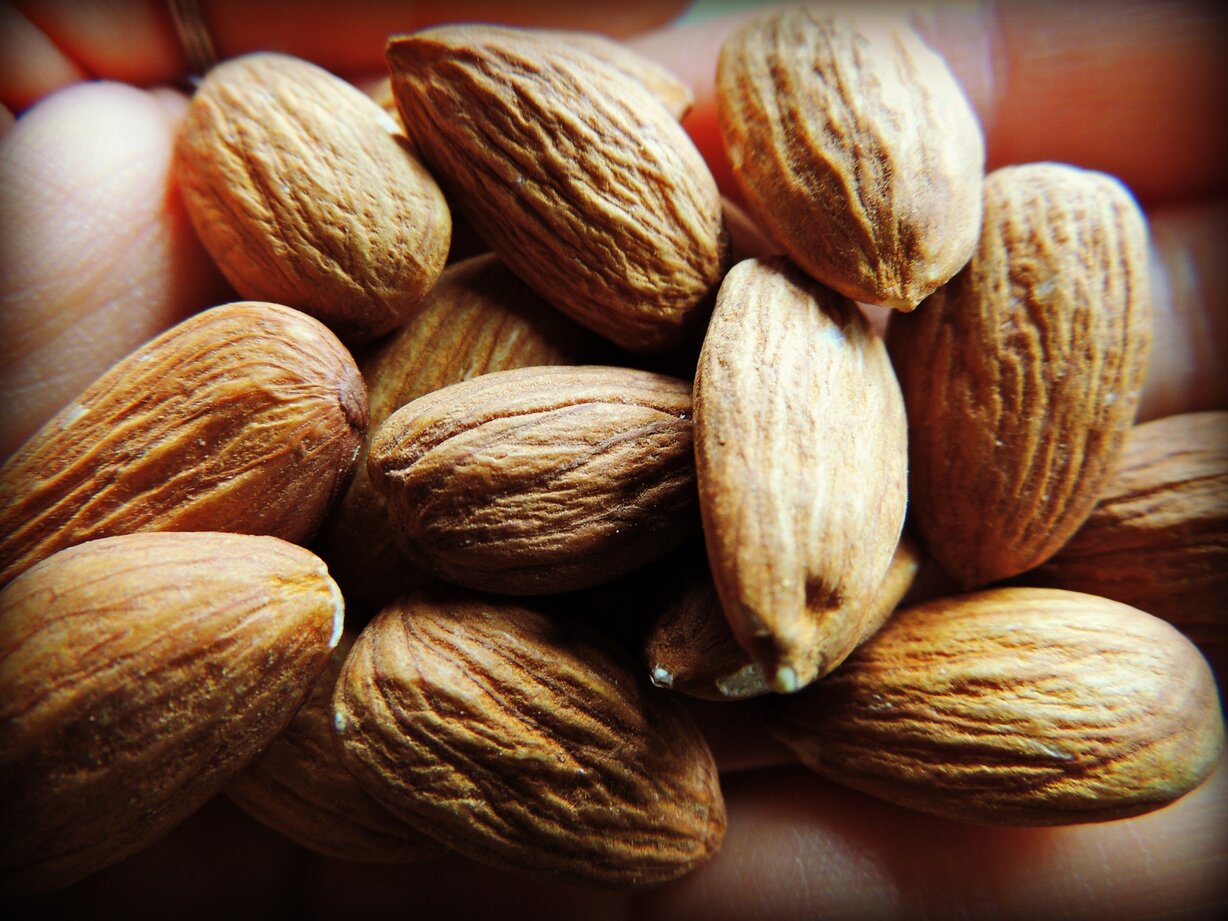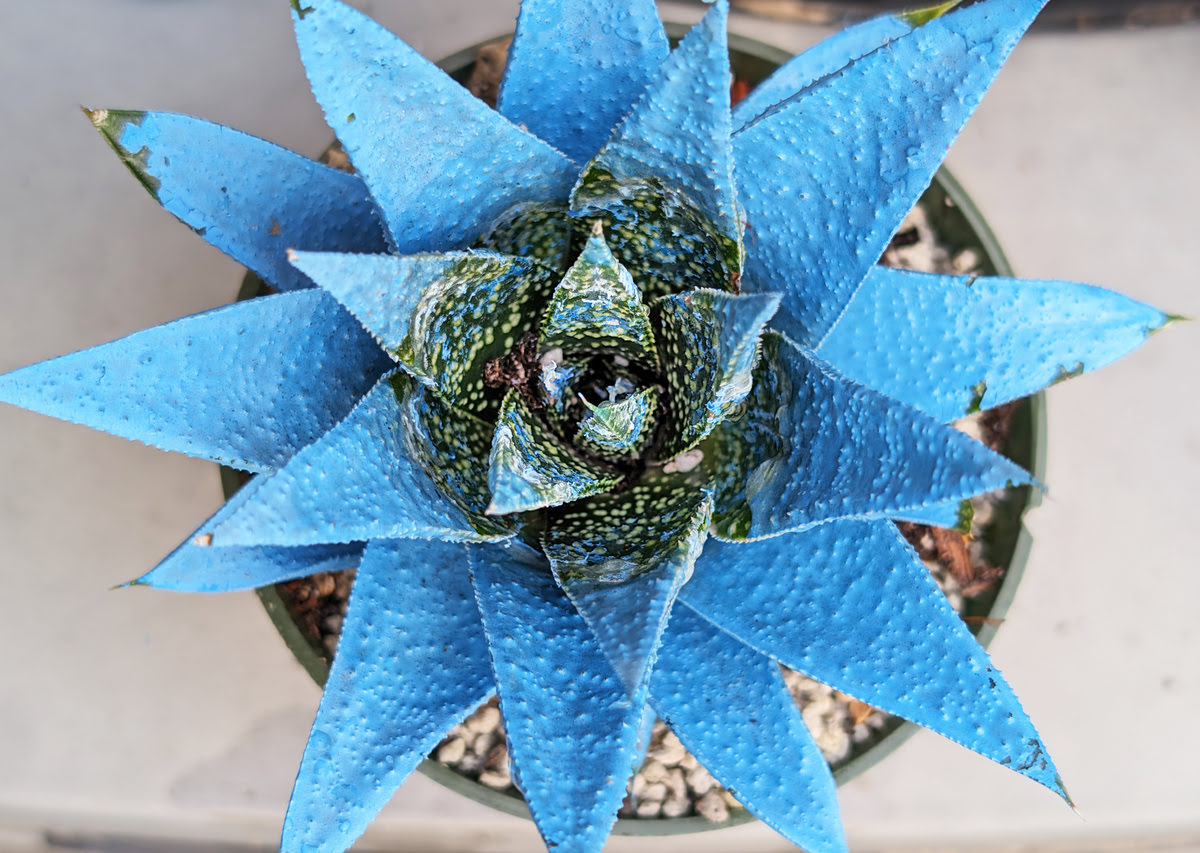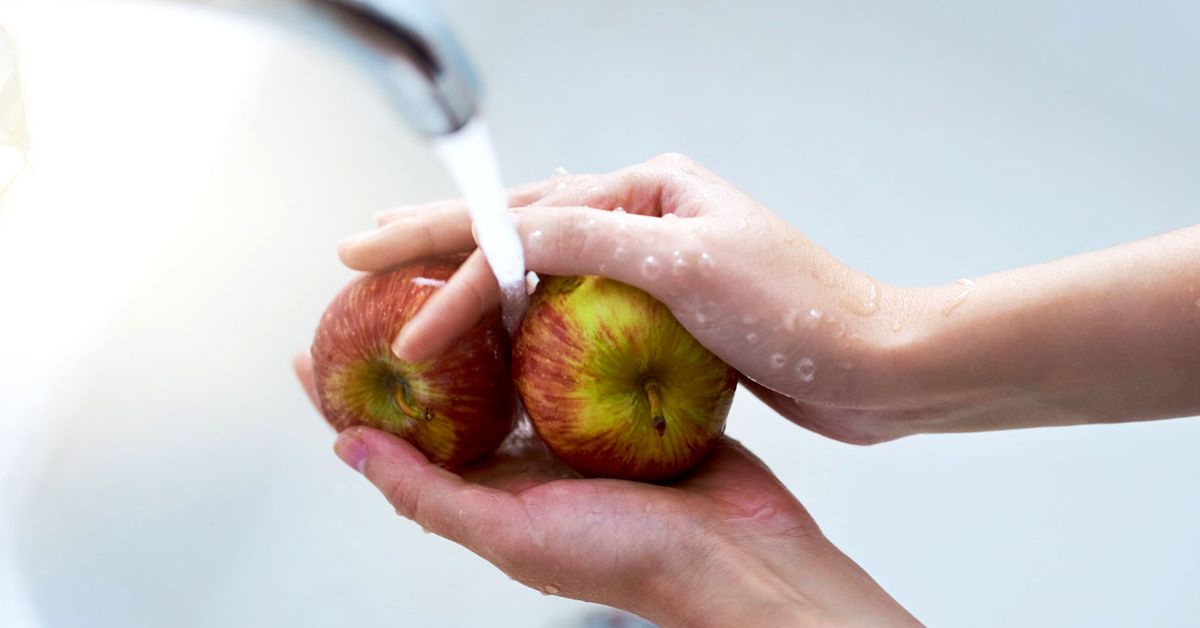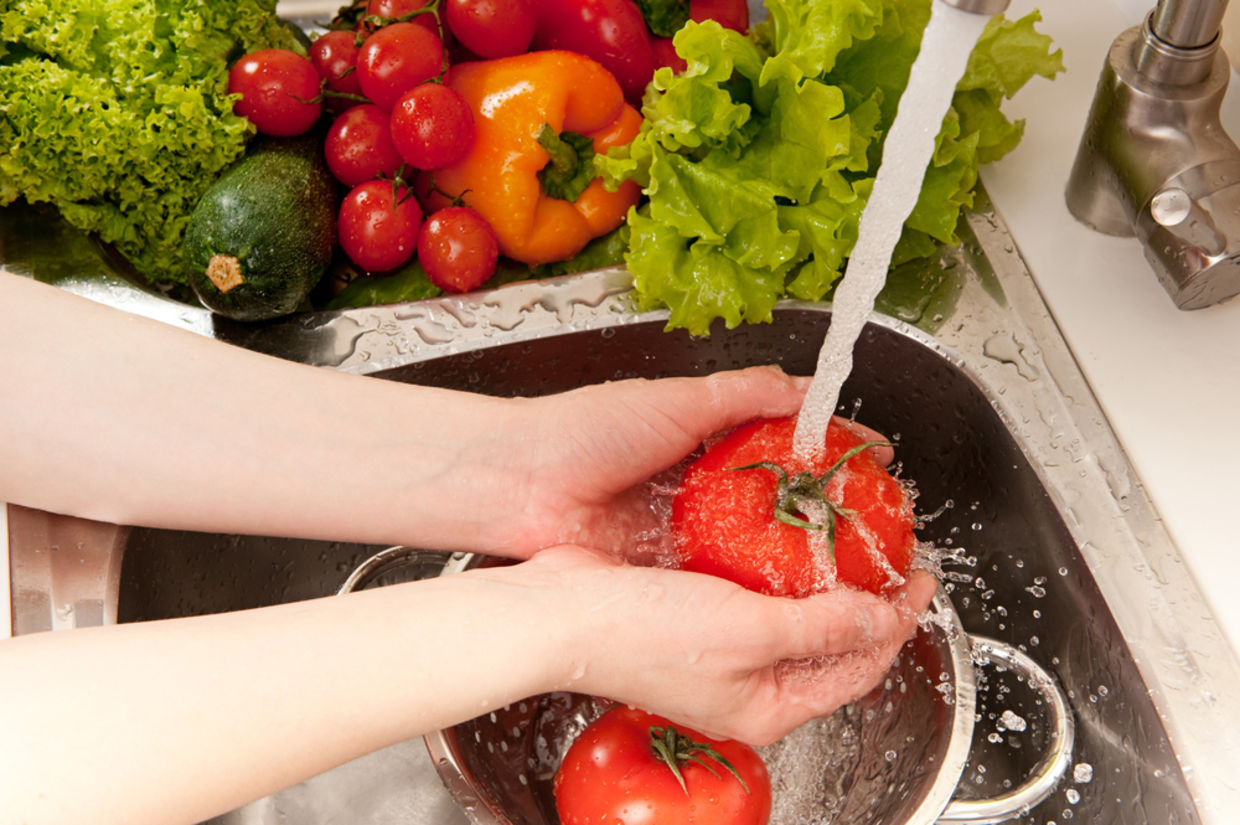Home>Gardening News and Trends>Latest News>How To Remove Pesticides From Nuts


Latest News
How To Remove Pesticides From Nuts
Modified: January 22, 2024
Discover the latest news on how to remove pesticides from nuts. Learn effective methods to ensure the safety of your consumption while enjoying your favorite nutty snacks.
(Many of the links in this article redirect to a specific reviewed product. Your purchase of these products through affiliate links helps to generate commission for Chicagolandgardening.com, at no extra cost. Learn more)
Table of Contents
- Introduction
- Understanding Pesticides in Nuts
- Why Removing Pesticides is Important
- Methods to Remove Pesticides from Nuts
- Washing with Water
- Soaking in Vinegar Solution
- Using Baking Soda Solution
- Utilizing Commercial Produce Washes
- Peeling the Nuts
- Blanching
- Dry Roasting
- Buying Organic Nuts
- Precautions to Consider
- Conclusion
Introduction
When it comes to maintaining a healthy lifestyle, nuts have long been recognized for their nutritional value. Packed with essential vitamins, minerals, and healthy fats, nuts are a popular choice for snacking and can be incorporated into a variety of dishes. However, like many other fruits and vegetables, nuts are often treated with pesticides during the cultivation process.
Pesticides are chemicals used to protect crops from pests and diseases, but their residues can remain on the surface of the nuts even after they have been harvested. While the use of pesticides helps ensure a bountiful harvest, these residues can pose a risk to human health if consumed in excess. Therefore, it is important to take measures to remove or reduce pesticide residues to minimize potential health effects.
This article will explore various methods to remove pesticides from nuts, providing you with practical tips to ensure that the nuts you consume are as safe and pesticide-free as possible. From simple washing techniques to utilizing natural solutions, there are several effective methods that can help minimize pesticide residues in nuts.
It’s important to note that the effectiveness of these methods may vary depending on the type of pesticide used, the nut variety, and the duration of exposure. However, by adopting these practices, you can take a proactive approach to reduce pesticide residues and make informed choices about the source and preparation of your nuts.
Now, let’s dive into the different methods and precautions you can take to remove pesticides from nuts!
Understanding Pesticides in Nuts
Pesticides are chemicals used in agriculture to protect crops from pests, diseases, and weeds. They are commonly used during the cultivation of various crops, including nuts. Pesticides work by targeting and eliminating harmful organisms that can cause damage to the crops, ensuring a higher yield and quality of the produce.
However, residues of these pesticides can remain on the surface of the nuts even after they have been harvested. This is because pesticides are designed to adhere to the surface of plants to provide long-lasting protection. As a result, nuts can become a potential source of exposure to pesticide residues when consumed.
There are various types of pesticides used in nut cultivation, including insecticides, fungicides, and herbicides. Insecticides are used to control insect pests that can damage the nuts, while fungicides prevent the growth of fungi and molds. Herbicides, on the other hand, are used to eliminate and suppress weeds that compete with nut trees for nutrients and resources.
The specific pesticides used can vary depending on the region, nut variety, and farming practices. Some commonly used pesticides in nut production include chlorpyrifos, azoxystrobin, glyphosate, and imidacloprid. These chemicals have been deemed safe for use in agriculture when applied according to regulations, but their residues on nuts should be minimized to ensure consumer safety.
It’s worth noting that consuming nuts with low levels of pesticide residues is generally considered safe. However, prolonged and excessive exposure to pesticides has been linked to various health issues, including reproductive problems, neurological effects, and increased risk of certain cancers.
Understanding the risks associated with pesticide residues in nuts underscores the importance of taking measures to remove or reduce these residues before consuming them. This not only helps minimize potential health risks but also promotes the overall well-being of individuals who incorporate nuts into their diet.
Why Removing Pesticides is Important
Removing pesticides from nuts is crucial for several reasons. Firstly, pesticide residues can potentially harm human health. Even though the use of pesticides is regulated and considered safe when applied correctly, long-term exposure to pesticide residues through food consumption has been linked to various health issues.
Secondly, individuals with sensitivities or allergies to specific pesticides may experience adverse reactions when consuming nuts with pesticide residues. These reactions can range from mild symptoms like skin irritation or gastrointestinal discomfort to more severe allergic reactions.
Furthermore, removing pesticides from nuts is important for individuals who prioritize organic and pesticide-free diets. Many people choose organic foods to minimize exposure to synthetic chemicals, and ensuring that nuts are free from pesticide residues is in line with these dietary choices.
In addition to the potential health implications, there are also environmental reasons to remove pesticides from nuts. Pesticide residues can contaminate water sources, soil, and non-target organisms, posing a risk to biodiversity and ecosystem balance. By minimizing pesticide residues in nuts, we contribute to a healthier environment and sustainable agricultural practices.
Lastly, removing pesticides from nuts helps maintain the flavor, texture, and quality of the nuts. Pesticides can leave behind a residue that may affect the taste and overall sensory experience of consuming nuts. By removing these residues, we can fully enjoy the natural flavors and characteristics of the nuts.
Overall, removing pesticides from nuts is important for preserving human health, supporting organic food choices, safeguarding the environment, and enhancing the overall eating experience. By taking steps to minimize pesticide residues, we can enjoy the nutritional benefits of nuts while ensuring the safety and well-being of ourselves and our loved ones.
Methods to Remove Pesticides from Nuts
Now that we understand the importance of removing pesticides from nuts, let’s explore some effective methods to accomplish this. These methods can help reduce pesticide residues and ensure that the nuts you consume are as safe and pesticide-free as possible.
-
Washing with Water:
One of the simplest ways to remove pesticide residues from nuts is to wash them thoroughly with water. Place the nuts in a colander or strainer and rinse them under cool, running water. Gently rub the nuts to remove any visible dirt or residue. This method can help remove some pesticide residues on the surface of the nuts.
-
Soaking in Vinegar Solution:
Vinegar is known for its cleansing properties and can be effective in removing pesticides from nuts. Prepare a solution by mixing one part vinegar with three parts water. Soak the nuts in this solution for about 15-20 minutes, then rinse them with water. Vinegar can help break down and dissolve pesticide residues.
-
Using Baking Soda Solution:
Baking soda is another readily available ingredient that can be used to remove pesticides from nuts. Create a solution by mixing one teaspoon of baking soda with two cups of water. Soak the nuts in this solution for 15 minutes, then rinse them thoroughly. Baking soda can help neutralize pesticide residues.
-
Utilizing Commercial Produce Washes:
There are commercially available produce washes specifically designed to remove pesticide residues from fruits and vegetables. These washes can also be used to clean nuts. Follow the instructions on the product label to ensure safe and effective use for removing pesticides.
-
Peeling the Nuts:
In some cases, peeling the skin off nuts can help reduce pesticide residues. This is especially applicable to nuts with a thick outer skin, such as almonds and hazelnuts. However, keep in mind that peeling may also remove some of the beneficial nutrients present in the skin.
-
Blanching:
Blanching is a process that involves briefly immersing nuts in boiling water, followed by a cold water bath. This method can help remove pesticide residues on the surface of the nuts. However, it may slightly alter the texture of the nuts.
-
Dry Roasting:
Dry roasting nuts at a high temperature (around 350°F or 175°C) can help break down and rid the nuts of pesticide residues. Roasting can also enhance the flavor and texture of the nuts. However, keep in mind that this method may result in some nutrient loss.
-
Buying Organic Nuts:
One of the most effective ways to ensure that nuts are free from pesticide residues is to purchase organic nuts. Organic farming practices prohibit the use of synthetic pesticides and rely on natural methods to protect crops. Look for certified organic nuts to enjoy a truly pesticide-free choice.
By employing these methods, you can significantly reduce pesticide residues on the surface of nuts, making them safer and healthier to consume.
Washing with Water
Washing nuts with water is one of the simplest and most accessible methods to remove pesticide residues. It is a quick and effective way to reduce surface contamination and make nuts safer to consume.
To wash nuts with water, start by placing them in a colander or strainer. Hold them under cool, running water and gently rub them with your fingers to remove any visible dirt or debris. The water will help loosen and rinse away any pesticide residues that may be present on the surface of the nuts.
While this method may not completely eliminate all pesticide residues, it can significantly reduce their levels and make the nuts safer to eat. Washing with water can also remove other contaminants like dust, pollen, and bacteria that may be present on the nuts.
It is important to note that the effectiveness of washing with water may vary depending on the type of pesticide used and its adherence to the nut’s surface. Some pesticides may be more difficult to remove with water alone, requiring additional methods or solutions.
When washing nuts, it is also essential to handle them with clean hands and use clean utensils and surfaces. This helps prevent cross-contamination from other sources and ensures the effectiveness of the washing process.
After washing the nuts, it is recommended to dry them thoroughly before consuming or storing. Moisture can promote mold growth, which can be harmful to health. Spread the nuts out on a clean towel or pat them dry with a towel to remove excess moisture.
Remember to wash the nuts right before consuming or using them in recipes to maintain their freshness and quality. If you plan to store the washed nuts, make sure they are completely dry before sealing them in an airtight container to prevent moisture build-up.
Overall, washing nuts with water is a simple and accessible method to remove pesticide residues and other contaminants. It is an essential step in ensuring the safety and quality of the nuts you consume.
Soaking in Vinegar Solution
Soaking nuts in a vinegar solution is an effective method to remove pesticide residues and other contaminants. Vinegar, a common household ingredient, has natural cleansing properties that can help break down and dissolve pesticide residues on the surface of the nuts.
To use this method, create a vinegar solution by mixing one part vinegar with three parts water. This dilution ensures that the vinegar is not too strong and prevents any potential negative effects on the nuts. Place the nuts in a container or bowl and pour the vinegar solution over them, ensuring that all the nuts are fully submerged.
Allow the nuts to soak in the vinegar solution for about 15 to 20 minutes. During this time, the vinegar will work to break down and remove pesticide residues, dirt, and bacteria from the nuts. Gently stir the nuts a few times to ensure even exposure to the solution.
After the soaking time is complete, drain the vinegar solution and rinse the nuts thoroughly with water. This step helps remove any remaining vinegar residue and ensures that the nuts are ready to be consumed or used in recipes.
It is important to note that while vinegar is effective in removing pesticide residues, it may not completely eliminate all traces. Some pesticides may be more resistant to vinegar, particularly if they have penetrated deeper into the nut’s surface. However, this soaking method can significantly reduce pesticide levels and enhance the safety of the nuts.
Furthermore, the acidity of vinegar can also help kill bacteria that might be present on the nuts, providing an additional level of food safety.
When using the soaking method, be sure to use plain, white vinegar or apple cider vinegar without any added flavors or additives. These types of vinegar are widely available and provide the best results for removing pesticide residues.
Soaking nuts in a vinegar solution is a simple and effective way to minimize pesticide contamination. By incorporating this method into your nut preparation routine, you can enjoy safer and healthier nuts without compromising their flavor or nutritional value.
Using Baking Soda Solution
Using a baking soda solution is another practical and accessible method to remove pesticide residues from nuts. Baking soda, also known as sodium bicarbonate, has natural cleansing properties that can help neutralize and remove pesticides.
To use this method, create a baking soda solution by mixing one teaspoon of baking soda with two cups of water. Stir the solution until the baking soda is completely dissolved.
Place the nuts in a container or bowl and pour the baking soda solution over them, ensuring that all the nuts are fully submerged. Allow the nuts to soak in the solution for about 15 minutes. During this time, the baking soda will work to break down and neutralize pesticide residues on the surface of the nuts.
After the soaking time is complete, drain the baking soda solution and rinse the nuts thoroughly with water. This step helps remove any remaining baking soda residue and ensures that the nuts are ready to be consumed or used in recipes.
It is worth noting that while baking soda can effectively reduce pesticide residues, it may not eliminate all traces. Some pesticides may require more specific treatments or additional methods to be completely removed.
In addition to its pesticide-removing properties, baking soda can also help remove dirt and debris, neutralize odors, and improve the overall cleanliness of the nuts.
When using the baking soda solution, it is important not to use an excessive amount of baking soda, as this may leave a residual taste on the nuts. Stick to the recommended ratio of one teaspoon of baking soda for every two cups of water to ensure the best results.
Furthermore, be sure to rinse the nuts thoroughly after soaking them in the baking soda solution to remove any remaining residue. Proper rinsing prevents any alteration in taste and ensures that the nuts are safe to consume.
Using a baking soda solution is a simple and effective method to reduce pesticide residues on nuts. By incorporating this method into your nut preparation routine, you can enjoy cleaner and safer nuts for yourself and your family.
Utilizing Commercial Produce Washes
Another option for removing pesticide residues from nuts is to utilize commercial produce washes. These specially formulated washes are designed to effectively remove pesticide residues, dirt, and other contaminants from fruits and vegetables, including nuts.
Commercial produce washes are readily available in most grocery stores and online retailers. They typically come in the form of sprays, wipes, or concentrated solutions. These products are specifically formulated to be safe for consumption and effective in removing pesticide residues when used as directed.
To utilize commercial produce washes, follow the instructions provided on the product label. The general process involves spraying or applying the wash directly onto the nuts, ensuring even coverage. Allow the wash to sit on the nuts for the recommended amount of time to allow the solution to work and break down any pesticide residues.
After the designated time, rinse the nuts thoroughly with water to remove any residual wash and pesticide residues. The rinsing process is important to ensure that no traces of the commercial wash or pesticides remain on the nuts.
It’s important to note that not all produce washes are created equal. Some products may be more effective at removing pesticide residues than others. Look for reputable brands or products that are specifically labeled for removing pesticides for the best results.
When using commercial produce washes, it’s crucial to read and follow the instructions carefully. Overusing or improperly using these products can potentially alter the taste, texture, and quality of the nuts.
While commercial produce washes are convenient and effective, it’s important to remember that they are an additional expense. If you prefer a more budget-friendly option, alternative methods like washing with water, soaking in vinegar solution, or using a baking soda solution can also be effective in reducing pesticide residues on nuts.
Utilizing a commercial produce wash for nuts provides a convenient and reliable method for removing pesticide residues. By incorporating this method into your nut preparation routine, you can have peace of mind knowing that your nuts are thoroughly cleansed and safe to consume.
Peeling the Nuts
Peeling the nuts is another method you can use to reduce pesticide residues on the surface. This method is particularly effective for nuts with a thick outer skin, such as almonds and hazelnuts.
To peel the nuts, start by blanching them in boiling water for a brief period. Blanching helps loosen the skin and makes it easier to remove. After blanching, transfer the nuts to a bowl of cold water or place them under cold running water to cool them down.
Once the nuts have cooled, take one nut at a time and gently squeeze and rub it between your fingers to remove the skin. The blanching process should have loosened the skin, making it easier to peel off. Repeat this process for all the nuts until the skins are completely removed.
Remove as much of the skin as possible, as pesticide residues tend to accumulate on the surface of the skin. By removing the outer layer, you can reduce the pesticide content significantly.
It’s important to note that peeling the nuts may result in some nutrient loss, as certain vitamins and minerals are found in higher concentrations in the nut skin. However, the decrease in pesticide exposure may outweigh the nutrient loss, especially if you consume a varied and balanced diet.
Peeling the nuts can be a time-consuming process, especially if you have a large quantity to peel. You may want to consider blanching and peeling smaller batches at a time to make the process more manageable.
Keep in mind that not all nuts are suitable for peeling. Some nuts, such as walnuts and pecans, have thin and fragile skins that are challenging to remove. In such cases, other methods like washing with water or using a baking soda solution may be more effective.
Peeling the nuts can be a labor-intensive but effective method to reduce pesticide residues. If you prefer to consume nuts without the skin and want to minimize your exposure to pesticides, this method can be a viable option to consider.
Blanching
Blanching is a method that involves briefly immersing nuts in boiling water and then transferring them to cold water. This process can help remove pesticide residues on the surface of the nuts, making them safer to consume.
To blanch nuts, start by bringing a pot of water to a rolling boil. Carefully add the nuts to the boiling water and let them cook for a short period, typically around 1 to 2 minutes. The blanching time may vary depending on the nut variety and size, so it’s essential to monitor them closely.
After the blanching time is complete, immediately remove the nuts from the boiling water and transfer them to a bowl of cold water or place them under cold running water. The rapid cooling helps stop the cooking process and also makes it easier to handle the nuts for further processing.
Once the nuts have cooled, you can proceed with other methods like peeling or simply allow them to air dry. Blanching helps loosen the skin and also kills potential bacteria or contaminants present on the nut surface.
While blanching is effective in reducing pesticide residues, keep in mind that some pesticides may have penetrated deeper into the nut, making complete removal challenging. However, blanching can still significantly decrease pesticide levels on the surface of the nuts.
It’s important to note that blanching may slightly alter the texture of the nuts. They may become slightly softer or more pliable after the process. However, this change in texture is generally minimal and does not impact the overall taste or quality of the nuts.
Blanching is a versatile method that can be used for various nut varieties, including almonds, hazelnuts, and pistachios. However, nuts with delicate or thin skins, such as walnuts and pecans, may not be suitable for blanching as they can become damaged or lose their shape.
Overall, blanching is a simple and effective method to reduce pesticide residues on nuts. By incorporating this method into your nut preparation routine, you can enjoy cleaner and safer nuts while maintaining their natural flavor and texture.
Dry Roasting
Dry roasting is a method that can help remove pesticide residues from nuts while enhancing their flavor and texture. This process involves roasting the nuts in an oven or on the stovetop without adding any oil or fat.
To dry roast nuts, preheat your oven to around 350°F (175°C) and spread the nuts evenly on a baking sheet. Place the baking sheet in the preheated oven and roast the nuts for approximately 10 to 15 minutes, or until they become slightly golden and fragrant.
If you prefer stovetop roasting, heat a dry, non-stick pan over medium heat. Add the nuts to the pan and stir them frequently to ensure even roasting. Roast for about 5 to 10 minutes until the nuts become lightly toasted.
Dry roasting not only enhances the flavor and aroma of the nuts but can also help break down and reduce pesticide residues on the surface. The dry heat can effectively remove some contaminants and pesticides that may be present on the nuts.
It’s important to note that while dry roasting can reduce pesticide residues, it may not eliminate all traces, particularly for pesticides that have penetrated deeper into the nut. However, the dry roasting process can significantly decrease pesticide levels on the surface of the nuts.
When dry roasting nuts, it’s advisable to monitor them closely to prevent over-roasting or burning. Nuts can quickly go from golden to burnt, so periodically check their color and give them a gentle shake or stir to ensure even heat distribution.
Allow the roasted nuts to cool before consuming or using them in recipes. This allows the nuts to firm up and provides a better eating experience. Roasted nuts can be enjoyed as a snack on their own or added to various dishes like salads, baked goods, or trail mixes.
Keep in mind that dry roasting may result in some nutrient loss, as heat can affect the nutritional composition of nuts. However, the decrease in pesticide exposure may outweigh this nutrient loss, especially when consuming a varied and balanced diet.
Dry roasting is a convenient and effective method to reduce pesticide residues on nuts while enhancing their taste and crunch. By incorporating this method into your nut preparation routine, you can enjoy safer and more flavorful nuts.
Buying Organic Nuts
One of the most effective ways to ensure that nuts are free from pesticide residues is to purchase organic nuts. Organic farming practices follow strict guidelines that prohibit the use of synthetic pesticides, herbicides, and fertilizers. Instead, organic farmers rely on natural methods to protect their crops and promote soil health.
When you buy organic nuts, you can have confidence that they have been grown and processed in a way that prioritizes environmental sustainability and consumer health. Organic certification ensures that the entire process, from cultivation to packaging, meets rigorous standards set by organic regulatory bodies.
Organic nuts are grown using natural fertilizers, organic pest control methods, and techniques that promote biodiversity. This reduces the risk of pesticide contamination and ensures that nuts are as pure and pesticide-free as possible.
When shopping for organic nuts, look for products that carry the organic certification label, such as the USDA Organic seal. This label guarantees that the nuts have been grown and processed in compliance with organic regulations.
While organic nuts may be slightly more expensive compared to conventionally grown nuts, the peace of mind and health benefits they provide make them a worthwhile investment. By opting for organic nuts, you support sustainable farming practices and contribute to a healthier environment.
It’s important to note that organic nuts may still have some minimal level of pesticide residues. However, these residues are from natural sources, such as those present in the soil or as a result of airborne contamination, rather than synthetic chemicals used in conventional farming.
Additionally, while organic nuts are an excellent choice, it’s important to remember that consuming a diverse range of nuts, whether organic or conventional, as part of a balanced diet is more crucial than focusing solely on their organic status.
Buying organic nuts provides a reliable and convenient way to ensure that your nuts are free from synthetic pesticide residues. By choosing organic, you prioritize your health, support sustainable farming practices, and contribute to a safer and healthier food system.
Precautions to Consider
While there are effective methods to remove pesticide residues from nuts, it’s important to keep in mind a few precautions to ensure safety and maximize their effectiveness.
Firstly, always wash your hands thoroughly before handling nuts to prevent any additional contamination. Clean utensils and kitchen surfaces should also be used when preparing or processing nuts to avoid cross-contamination.
When washing nuts with water, use cool running water and gently rub the nuts with your fingers to remove visible dirt and debris. However, avoid excessive scrubbing or brushing, as this can potentially damage the nuts or lead to nutrient loss.
When using soaking methods like vinegar or baking soda solutions, follow the recommended ratios and soaking times to avoid changes in taste or texture. Thoroughly rinse the nuts after soaking to remove any residual cleaning solution.
If you are considering peeling the nuts, be aware that peeling can result in some nutrient loss, as certain vitamins and minerals are concentrated in the skin. Consider the trade-off between reducing pesticide exposure and nutrient content when deciding whether to peel the nuts.
If you choose to blanch the nuts, monitor the blanching time closely to prevent overcooking. Overblanching can lead to loss of flavor and potentially affect the texture of the nuts.
When dry roasting nuts, keep a close eye on them to prevent burning or over-roasting. Over-roasting can negatively impact the taste and texture of the nuts, rendering them unpleasant to eat.
While all these methods can significantly reduce pesticide residues, it’s important to acknowledge that they may not completely eliminate all traces. Some pesticides may have penetrated deeper into the nuts and may be challenging to remove entirely.
Lastly, when buying nuts, consider sourcing them from trusted and reputable suppliers. Look for organic options, if available, to ensure they have been produced following strict guidelines. Read labels, check for certifications, and choose brands that prioritize quality and safety.
By taking these precautions and following recommended methods, you can minimize pesticide residues on nuts and enjoy them with confidence, knowing that you have taken steps to prioritize your health and well-being.
Conclusion
Ensuring that the nuts we consume are free from pesticide residues is essential for our health and well-being. Fortunately, there are several effective methods to remove pesticides from nuts, allowing us to enjoy them safely and with peace of mind.
Methods such as washing with water, soaking in vinegar or baking soda solutions, utilizing commercial produce washes, peeling the nuts, blanching, dry roasting, and buying organic nuts provide practical and accessible options for reducing pesticide residues.
Each method has its own advantages and considerations. Washing with water is simple and readily available, while soaking in vinegar or baking soda solutions helps break down and dissolve pesticides. Utilizing commercial produce washes offers convenience, and peeling the nuts can further reduce pesticide exposure. Blanching and dry roasting not only remove residues but also enhance the flavor and texture of the nuts. Opting for organic nuts ensures a pesticide-free choice while supporting sustainable farming practices.
It’s important to take precautions when using these methods, including maintaining cleanliness, following instructions closely, and considering the potential nutrient loss or changes in texture when applicable.
By incorporating these methods and precautions into our nut preparation routine, we can minimize pesticide residues and make informed choices about the nuts we consume. Whether it’s a handful of almonds as a snack, a sprinkle of walnuts on a salad, or a handful of mixed nuts in our favorite recipes, we can enjoy the nutritional benefits of nuts while reducing our exposure to harmful pesticides.
Remember, our health is impacted not just by the nutrition in our food, but also by the quality and safety of the ingredients we choose. By taking steps to remove or reduce pesticide residues from nuts, we nourish our bodies with healthier options and promote a sustainable and sustainable food system.








